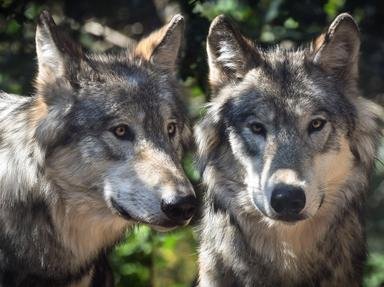Quiz Answer Key and Fun Facts
1. The term "jackal" is specifically applied to black-backed, side-striped, and golden jackals, which are found predominantly in Africa. However, the term "jackal" is often used for other members of the Canidae family. Which of the following is alternatively named the American jackal?
2. In the Serengeti, the Thompson's gazelle will be aware of the dangers of lions and cheetahs, but there will be few animals more dangerous than this member of the dog family. Which wild dog, alternatively known as the painted dog, was observed to succeed in 90% of its hunts, compared to only 30% for lions?
3. One of the smallest wild dogs is the Arctic fox, which survives in the extreme cold climate in the Arctic Circle. Which animal, famous for its fluctuating populations, is a major part of the Arctic fox's diet?
4. The mysterious bush dog can be found in South and Central America. What unusual adaptation do these dogs have, which comes in handy during hunting?
5. When walking through a park in Japan it would not be uncommon to come across this canid, which is named for another animal to which it is not related. In Japanese folklore, this animal also has the reputation of a shape-shifter. Which wild dog is this?
6. The ancestor of all domestic dogs and one of the best-studied wild animals is the grey wolf. It is understood that the grey wolf has superior night vision compared to other members of the Canidae family, but which of the following best describes its sense of smell?
7. Despite its name, this animal is not closely related to any other canid, but instead belongs to its own unique genus called Chrysocyon. What is the name of this leggy animal, the tallest of all the wild canids?
8. Dogs are a man's best friend, but one of its wild relatives has received attention for its anthropomorphic facial features. What is the name of this canid, which is found in the Tibetan plateau and which has been seen working with brown bears to get food?
9. A silver fox is more than just an attractive older man. They are one of the most widely distributed canids in the world. What is the relationship between the silver fox and the red fox?
10. Similar in appearance to the red fox, but larger in size is the culpeo. This canid commonly hunts rodents and lagomorphs, but has been known to take down larger prey such as sheep and guanacos. Where can the culpeo be found in the wild?
Source: Author
doublemm
This quiz was reviewed by FunTrivia editor
guitargoddess before going online.
Any errors found in FunTrivia content are routinely corrected through our feedback system.


